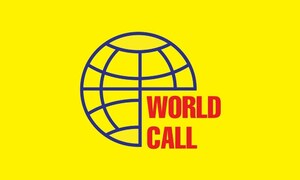EDITORIAL: Exactly ten days after the end of a two-week mission on the first review of the 7 billion dollar programme, the International Monetary Fund (IMF) uploaded the following good news on its website: “IMF staff and the Pakistani authorities have reached a staff-level agreement (SLA) on the first review under Pakistan’s Extended Fund Facility (EFF) and on a new arrangement under the Resilience and Sustainability Facility (RSF).”
The tranche release under the ongoing EFF is around 1 billion dollars (Special Drawing Rights 760 million), bringing total disbursement thus far to 2 billion dollars while the RSF will allow access to 1.3 billion dollars (SDR one billion) over 28 months.
This, however, has fueled rather than eased speculation as to the reason(s) behind the ten-day delay. Those who argued, based on past precedence, that the IMF had set prior condition(s) point to two major decisions taken by the government during the ten-day period (15 March to 25 March) that in all probability were insisted on by the mission.
First, the highest economic decision-making body; notably, the Economic Coordination Committee of the cabinet headed by the Minister for Finance decided that the State Bank of Pakistan’s long-term financing facility (LTFF) portfolio of 330 billion rupees would be phased out to the Export-Import (Exim) Bank with the reduced allocation of 1.001 billion rupees through a technical supplementary grant to meet the LTFF subsidy requirement for the new portfolio for the current fiscal year; and in addition fresh/additional LTTF portfolio of 210 billion rupees will also be executed by the Exim Bank.
Second, a Business Recorder exclusive report revealed that the Federal Board of Revenue (FBR) is seriously considering the re-launch of a registration drive for traders/shopkeepers, which was abandoned last year with the objective of broadening the tax base after the Board was compelled to reach an agreement with traders threatening a country-wide strike action – an agreement which led to the insertion in the Income Tax Ordinance 2001 of Section 236 G (advance tax on purchases made by distributing dealers/wholesalers/commercial importers reduced from 2 percent - non-filer rate - to 0.1 percent - filer rate); and 236 H (advance tax collected on sales to retailers by manufacturers/commercial importers/distributors reduced from 2.5 percent - non-filer rate - to 0.5 percent – filer rate).
The 15 March end of mission statement referred to “planned fiscal consolidation to durably reduce public debt” but tellingly the 25th March statement referred to the authorities’ “continued efforts to enhance revenue mobilization, spending efficiency and transparency, broadening the tax base.” The 25th March statement instead highlighted the need to effectively implement the agriculture income tax regimes amended by all four provinces.
The Fund team referred to “acceleration of cost-reducing reforms to improve energy sector viability” in its end of mission statement but in the SLA approval statement reiterated its standard stance based on internationally approved policies with little applicability to Pakistan: “it is necessary to accelerate cost side reforms, including improving distribution efficiencies, integrating captive power into the electricity grid, enhancing transmission system, privatising inefficient generation companies and expanding renewable energy adoption.” Pakistani administrations signed off on ill-
advised contracts with independent power producers that envisaged capacity payments in dollar terms; to add insult to injury subsequent administrations then proceeded to support renewables, affordable mainly by middle income earners and above, that reduced demand from the national grid, raising the capacity charges on existing consumers.
The authorities would be well advised to revisit the policy of extending tariff differential subsidy of more than half a trillion rupees per annum, a subsidy also extended to the privatised K-Electric because of regulated uniform tariff, which makes any attempt to privatise a distribution company absurd.
There is no emphasis in the SLA statement on borrowing by the government and the focus is squarely on the primary surplus that excludes borrowing costs with a pledge to sustain consolidation in next year’s budget is disturbing.
There is mention of refraining from increasing current spending but one wonders why the Fund team approved a raise of 21 percent in the current expenditure this year, given the narrow fiscal space – a raise that was on the back of a rise in borrowing costs, a 20 to 25 percent rise in salaries of government employees and an increasingly unsustainable pension bill.
The 25 March 2025 SLA statement reiterates what was stated in the SLA for the EFF in October last year: to adopt appropriate governance mechanisms and safeguards for the Pakistan Sovereign Wealth Fund though unlike in the earlier detailed report there is no mention of the Special Investment Facilitation Council (SIFC) though there is mention of the desirability of “a level playing field for business and investment.”
And finally, the SLA notes that implementation of SOE governance framework across all SOEs will strengthen institutional capacity and significantly (there have been numerous attempts to improve governance over the past three decades with no positive outcome), and reduce trade barriers to support inclusive growth though sadly in Pakistan reducing trade barriers has invariably led to serious balance of payments issues, prompting the country to go back on a Fund programme rather than supported inclusive growth.
Copyright Business Recorder, 2025























Comments